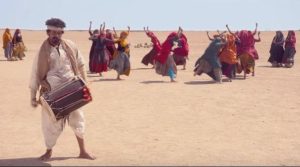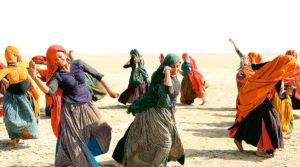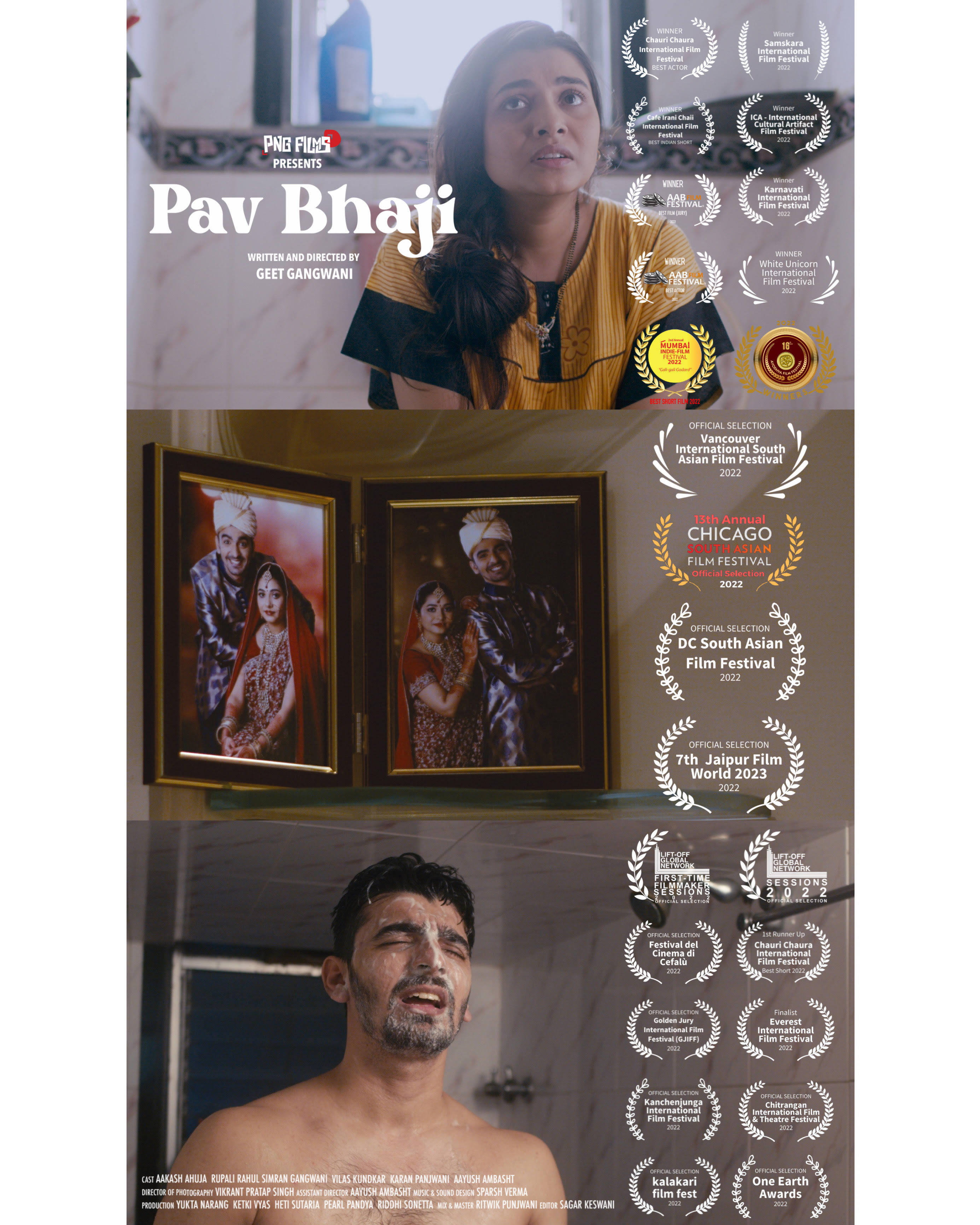
ECSA 2020 Film Review “Hellaro”
WATCH THE TRAILER HERE
First, the Recap:
The tenor of merit and the nucleus of worth. To grasp the value that something holds is often to look well beyond convention, societal “standards”, even the ever-present specter of what we wish to acknowledge as “tradition”, unimpeachable, immovable, unchangeable. When this is all applied towards individuals and is gender-specific, however, what happens when the concept of what’s right gets decidedly skewed? It is 1975, Kutch, India and within a small outlying village there resides the rigidity and blatant oppression of a male-dominated patriarchy. But, when an unexpected encounter with a bedraggled Dholi named Mulji (Jayesh More) immerses twelve of the village’s women–Manjhri (Shraddha Dangar), Gauri (Tarjanee Bhadla), Champa (Kaushambi Bhatt), Radha (Denisha Ghumra), Mena (Kamini Panchal), Ganga (Shachi Joshi), Gomti (Tejal Panchasara), Rudi (Jagruti Thakore), Kanchan (Riddhi Yadav), Kesar (Brinda Trivedi), Leela (Niilam Paanchal), and Hansa (Ekta Bachwani)–in a new experience of unfettered, expressive release, it will change all of their lives forever.
Next, my Mind:
It is a raw, unrelenting, yet ultimately victorious visualization of cultural, historical, gender-based politics intermixed with the rhythm of the human spirit, what was hidden being revealed, a breaking of boundaries, the vibrancy of life, and the beating heart of what it is to truly live free that permeates the dramatically palpable atmosphere presented in this 121-minute feature film effort from writer/director/co-producer Abhishek Shah that served as an opening night film for the first ever 2020 ECSA: Escapist Cinema of South Asia online film festival presented by Jingo Media and sister festivals DFW SAFF and NYC SAFF. Additionally tackling thematic elements that encompass religion, superstition, ingrained customs, and the seeking of justice from abuse and devaluation, the film becomes a statement for the ages.
A smartly written narrative propels us from start to finish with a sometimes intentionally slow-burn mentality and tone into the plight of one small village’s immediate struggle of sustaining itself during a long-running drought and how it impacts the lives of the women, who are very much seen as nothing more than property to be owned and, overall, are treated as neglected indentured servants. Yet, in the midst of this, one young bride’s yearning for liberation and self-worth drives a group of them to end up finding a highly unanticipated means of creative unshackling thanks to one moment of kindness shown to a stranger while the women are on a water run on the barren desert surrounding their village. What emerges from this encounter is nothing less than miraculous deliverance for all of them, poignantly potent and stirringly effective.
The beauty of this notion is not lost to history and that’s what, for this critic, provides the film with its undeniable relevance and necessary message about gender equality and the mistreatment of women that sadly still exists in certain areas of India to this day. I appreciate bold efforts that aren’t afraid to showcase women standing up against their oppression, and its a worthy cause to support, especially in this day and age when more and more women are making a serious mark in all forms of business, very much including the film industry. I can honestly see this as a rallying cry, not preachy or melodramatically, but with sincere, genuine intention to raise awareness and keep this issue in the forefront of people’s minds and, I hope, hearts to spur continuing change and social adjustment, especially in view of the film’s deeply emotionally rousing finale.
Visually the film has some stunning sequences illustrating the simple yet deeply affecting vastness of the desert region the narrative takes place in, very much bringing to life the sense of desolation and building hopelessness the village is already facing while then becoming a source of spirited, energetic life for the women whose notions of their current circumstances will be altered definitively by what they find there. And then there are the musical sequences that are nothing short of inspiring, filled with a passion, exuberance, substance, and purpose that even transcends the film’s foundational premise and radiates a tone of joy, absolute freedom, and internal elation that is tangibly felt via the traditional songs and dances displayed, accompanied of course by the pounding resonance of the dhol that one cannot ignore.
More excels in his role as Mulji, the beleaguered and personally haunted Dholi the women stumble upon during a trip from their village to fetch water. One act of kindness awakens him with gratitude and the ensuing actions he takes to show his appreciation brings about a radical and wholly needed change to the women’s reality. More is totally believable and embodies the character with a fervent intensity that fully fits his character’s backstory and personal turmoil he also is trying to overcome, which in itself adds a superbly crafted facet to the story in that it paints a portrait of just how much these women affect his life as much as he’s influenced theirs. It’s a masterful performance by More, understated at times, yet unquestionably moving.
Then there is this incredible ensemble of actresses that portray the primary group of women whose lives are so immeasurably transformed, reconstructed, and reshaped by their happenstance in meeting Mulji, and to write individually about them each would cause this review to become the Great American Novel. But, this isn’t taking a single amount of praise away or short-changing any one of them because folks, every single actress absolutely shines with an effervescent, believable, fiery, yet vulnerably impassioned manner so as to deftly portrays both the heartbreaking pain their characters are enduring while then exploding with such measurable happiness and exhilaration upon embarking on a journey to defiant emancipation. It’s nothing short of uplifting, stimulating, and dynamic, embodied to fantastic effect and intent by each of them. All I can say to every one of them is a wholehearted “BRAVO!!”.
Primary supporting appearances are made from Shailesh Prajapati as the village leader Mukhi, Maulik Nayak as Bhagla, a local trader, and Aarjav Trivedi as Arjan, Manjhri’s domineering husband, along with additional supporting roles from Anjali Gor, Pradyumansingh Jadeja, Esha Kansara, Prapti Mehta, and Dhriti Patel among many others, all of whose work is appreciated please know that. So, in total, with it being FAR more than evident why this project was a two-time National Award Winner, “Hellaro” is a beautifully constructed piece of South Asian artistry that shows just how amazingly effective it is when the combination of both entertainment and socially aware storytelling creates a film of lasting impression and noteworthy, necessary themes that I very much hope will reverberate now and into forever as a battle cry not just for women, but for humanity and its betterment all around.
As always, this is all for your consideration and comment. Until next time, thank you for reading!





